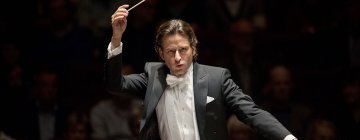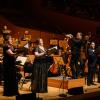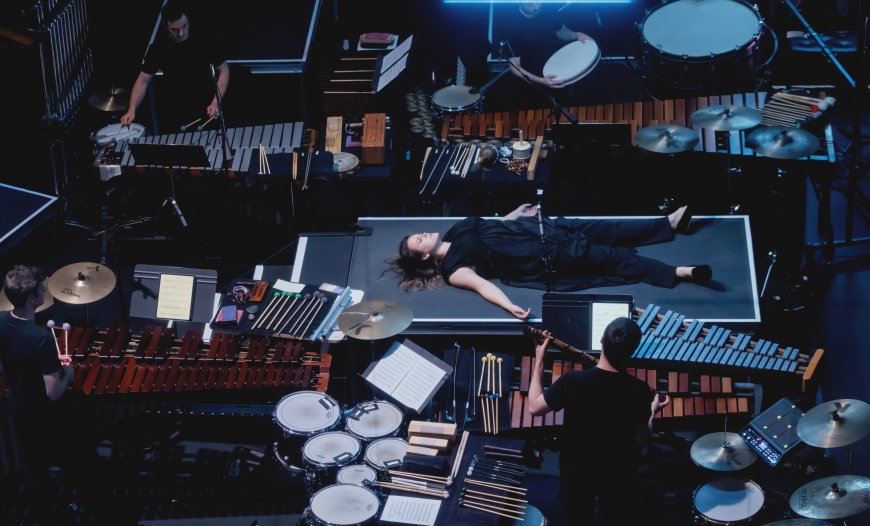
At Lincoln Center’s David Geffen Hall, Music for New Bodies explored major forces shaping our world, including the impending climate crisis, illness, technology, and the rise of artificial intelligence. In doing so, the expansive vocal symphony invited audiences to reflect on the impact of humanity’s actions on both our planet and our bodies. Written and conducted by Matthew Aucoin and directed by Peter Sellars — both of whom are MacArthur “geniuses” — the performance featured fearless performances and was received enthusiastically by a sold-out house.
The American Modern Opera Company (AMOC*) presented the New York premiere of New Bodies with two performances on July 10 and July 11 as part of its Run AMOC* Festival, hosted by Lincoln Center’s Summer for the City series. AMOC*, co-founded by Aucoin, is an interdisciplinary artist collective and vanguard of contemporary opera.
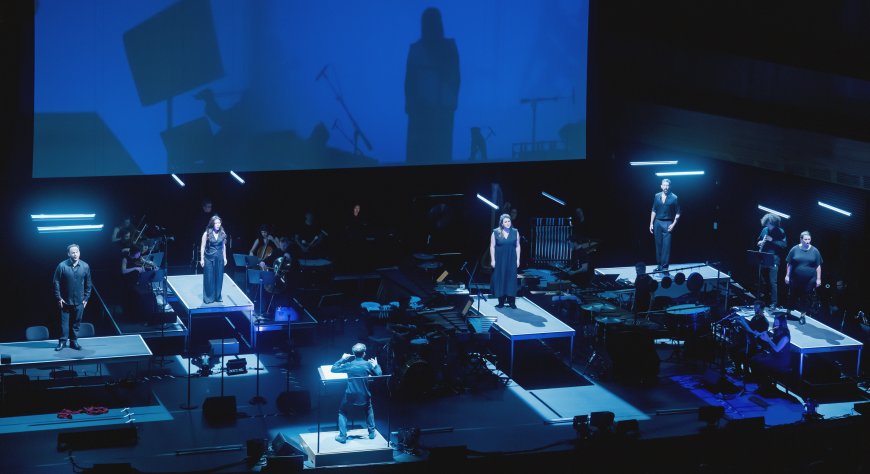
Aucoin’s libretto draws from the writings of Jorie Graham, the acclaimed poet and Aucoin’s former professor at Harvard, whose recent work compares her experience undergoing cancer treatment with the ecologically devastating practice of extractive fishing. The five vocalists in New Bodies — Song Hee Lee (high soprano), Meryl Dominguez (soprano), Megan Moore (mezzo), Paul Appleby (tenor), and Evan Hughes (bass-baritone) — embodied Graham’s perspective and many others. New Bodies interwove a multitude of vocal styles — some human, some manmade, and some from the depths of the ocean — blending power, fluid legato, and even monotone chatbots as needed.
At times an equal partner to the vocal soloists, the oboe obbligato soared into an eerie, stratospheric register and executed harmonics composers rarely explore. Joe Jordan delivered the part with expressive intensity.
Alongside the vocalists, Aucoin scored New Bodies for an 18-piece chamber orchestra with electronic components, drawing on sounds ranging from organic to mechanical. With characteristic deftness, the composer weaves diverse musical traditions and textures into a nimble and modern language.
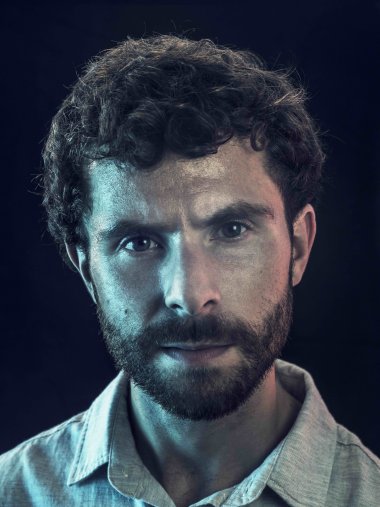
In its themes, form, and scale, the five-movement, 70-minute work recalls Mahler’s Das Lied von der Erde. The first movement, “Cryo,” expresses the protagonist’s shock upon receiving a medical diagnosis and considering cryopreservation. “Cryo” began with throbbing — a heartbeat, or a machine? — executed by strings and gongs.
A second movement burst into driving rhythmic gestures which resembled a percussion concerto. This expansive scoring was well-executed by the skilled hands of the Sandbox Percussion quartet, a Grammy-nominated ensemble.
While New Bodies has been iterating for over a year, with concerts and workshops produced at Rice University, Aspen Music Festival, Brown University, and SUNY Purchase, the AMOC* performances debuted Sellars’s staging. Echoing the music, Sellars notably grouped the instrumentalists into “schools,” spaced apart from each other and roving the stage like fish. This blocking was most evident during a kind of mini-Passion in “Cryo” as the wind instruments circled high soprano Song Hee Lee, embodying the Crucifixion and portraying Christ with stunningly weightless lines.
More broadly, the staging of New Bodies recalled Sellars’s renowned staging of Bach’s Passion oratorios. The singers, dressed in simple black, began moving around the orchestra from their first notes. They eventually took positions on raised platforms used variously as solo stages, desks, or operating tables, under minimalist lighting that changed subtly but effectively.
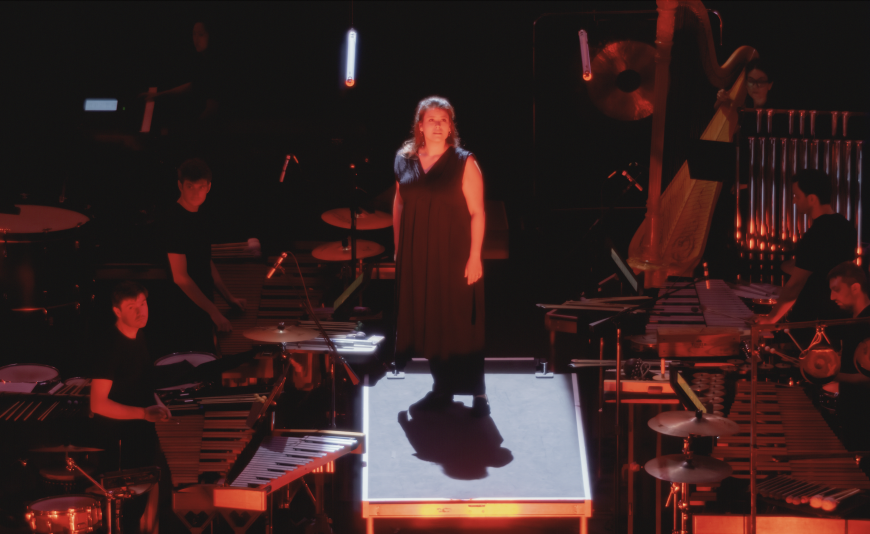
The third movement, “Deep Water Trawling,” sunk listeners to the ocean floor and into the violent machinery of industrial overfishing. The soloists, now portraying marine life, writhed on the floor while impressively delivering a haunting message that condemned consumerist forces. “There is nothing in particular you want, you just want,” they sang. Later, Wagnerian swells accompanied mezzo-soprano Moore in an achingly beautiful plea which Aucoin describes in his program note as “a modern-day Erda,” or goddess of the earth.
The fourth movement, “Prying / Dis-,” traced the protagonist’s surgery and psychedelic descent into general anesthesia. Accompanied by a jazz-pop drum beat and colorful lighting, soloists animated a seemingly artificial speaker by spewing endless nonsense. The sequence was oddly lulling.
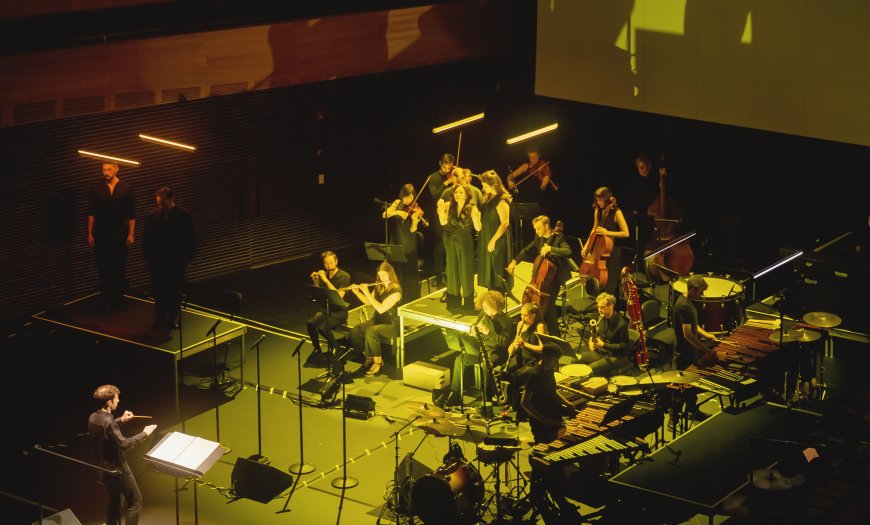
With its maximalist aesthetic, New Bodies benefited from Aucoin’s touch, and decision to spend time apart from Graham’s poetry, which lost some velocity in the excerpted libretto. However, the work’s multifarious components effectively reflected and grappled with a world spiraling into chaos.
The piece was not without hope. The final movement, Poem, marked a radical shift, unfolding with slow, immersive warmth. Spoken by the earth itself, the final words of New Bodies, “remember me,” surged into a seismic crescendo and resonated with immense gravity.
This joy carried outside the David Geffen Hall to Lincoln Center Plaza, where “schools” of swing dancers twirled alongside a live band. This post-show gathering grew as a crowd joined for a silent disco, an audience streamed out of a ballet performance, and other bodies convened in the night air.
